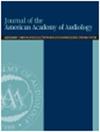抽象音位复杂性对错配负性(MMN)振幅的影响。
IF 1
4区 医学
Q3 AUDIOLOGY & SPEECH-LANGUAGE PATHOLOGY
引用次数: 0
摘要
目的错配负性(MMN)反映了一种前知觉神经生理反应,它是由于环境中正在发生的感官事件的记忆痕迹被打断而在潜意识中产生的。它已被研究人员广泛用于了解复杂的知觉机制。此外,它还被推荐为研究助听器和人工耳蜗使用者听觉认知障碍的客观工具。许多研究人员认为,在奇球范式中利用标准刺激和偏差刺激之间较大的声学差异将导致更强的 MMN 反应。本研究的目的是考察在奇异球范式中增加标准和偏差刺激之间的抽象音位对比是否会导致更强的 MMN 反应。为了确保MMN反应是由刺激物的音位差异而非声学差异引起的,在设计怪球范式时,根据Phillips等人(2000年)的描述,在控制声学特征的同时,为抽象音位特征创建了一对多的比例。在 Cz 和 Fz 电极测量 MMN 振幅有两种情况,每种情况有两次试验。在条件 1 中,标准发音和偏差发音有一个明显的不同特征:试验 1 中的发音(/tӕ/ 为标准发音,/dӕ/ 为偏差发音)和试验 2 中的发音位置(/bӕ/ 为标准发音,/dӕ/ 为偏差发音)。在条件 2 中,标准音和偏离音在两个显著特征上存在差异:发声和发音位置。在试验 1 中,/pӕ/ 是标准的,而 /dӕ/ 则是偏差的;在试验 2 中,/dӕ/ 是标准的,而 /pӕ/ 则是偏差的。结果 两个显著特征引起的 MMN 振幅明显大于一个显著特征引起的 MMN 振幅(p<0.001)。每个条件下的第 1 次和第 2 次测试没有统计学差异,它们具有可重复性和高度相关性。来自 Cz 和 Fz 电极的记录无统计学差异,且高度相关、形态相似。本研究表明,这一假设可以扩展到抽象音位复杂性。通过在奇数范式中使用更多的独特特征来增加音位复杂性,可以提高 MMN 的振幅和稳健性。本文章由计算机程序翻译,如有差异,请以英文原文为准。
Effect of Abstract Phonemic Complexity on Mismatch Negativity (MMN) Amplitude.
PURPOSE
Mismatch negativity (MMN) reflects a pre-perceptual neurophysiological response that is generated subconsciously due to the interruption of a memory trace of ongoing sensory events in the environment. It has been widely used by researchers to understand complex perceptual mechanisms. Furthermore, it has been recommended as an objective tool to investigate disorders related to auditory cognition in hearing aid and cochlear implant users. Many researchers suggest that utilizing a larger acoustic difference between standard and deviant stimuli within the oddball paradigm will lead to a more robust MMN response. The purpose of the present study is to examine if increasing the abstract phonemic contrast between standard and deviant stimuli in the oddball paradigm leads to a more robust MMN response.
METHODS
Fourteen young female adults participated in the present study. To ensure that the MMN response was elicited by phonemic and not acoustic differences in the stimuli, a one-to-many ratio was created for the abstract phonemic features while controlling the acoustic features when designing the oddball paradigm as described by Phillips et al. (2000). MMN amplitude was measured at the Cz and Fz electrodes in 2 conditions, with 2 trials in each condition. In condition 1, the standards and deviants differed by one distinctive feature: voicing in trial 1 (/tӕ/ was standard and /dӕ/ was deviant), and place of articulation in trial 2 (/bӕ/ was standard and /dӕ/ was deviant). In condition 2, the standards and deviants differed across two distinctive features: voicing and place of articulation. In trial 1, /pӕ/ was standard and /dӕ/ was deviant; in trial 2, /dӕ/ was standard and /pӕ/ was deviant.
RESULTS
MMN amplitudes elicited by two distinctive features were significantly larger than MMN amplitudes elicited by one distinctive feature (p<0.001). Trials 1 and 2 in each condition showed no statistical difference, and they were repeatable and highly correlated. Recordings from the Cz and Fz electrodes showed no statistical difference and were highly correlated and similar in morphology.
CONCLUSIONS
It is known in the literature that increasing acoustic complexity elicits a more robust MMN. The present study showed that this assumption can be extended to abstract phonemic complexity. Increasing the phonemic complexity by utilizing more distinctive features in the oddball paradigm increased the amplitude and robustness of the MMN.
求助全文
通过发布文献求助,成功后即可免费获取论文全文。
去求助
来源期刊
CiteScore
3.10
自引率
0.00%
发文量
46
审稿时长
6-12 weeks
期刊介绍:
The Journal of the American Academy of Audiology (JAAA) is the Academy''s scholarly peer-reviewed publication, issued 10 times per year and available to Academy members as a benefit of membership. The JAAA publishes articles and clinical reports in all areas of audiology, including audiological assessment, amplification, aural habilitation and rehabilitation, auditory electrophysiology, vestibular assessment, and hearing science.

 求助内容:
求助内容: 应助结果提醒方式:
应助结果提醒方式:


